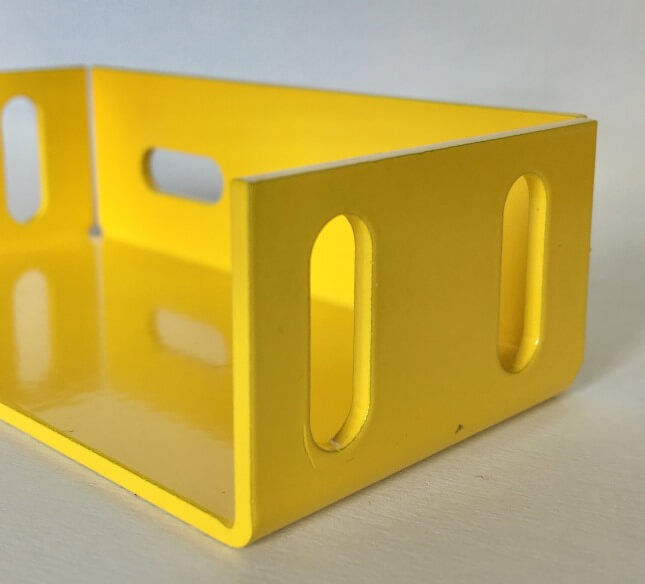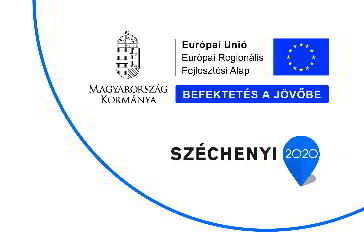The launch of our powder painting plant in September 2020 is the reason for revising and republishing our blog article from 2017 on electrostatic powder spraying. At the time of writing the original article, this coating process was not yet available in-house, we got it done through cooperation partners. Our customers have had very high demands on us in terms of the quality of powder coating. In recent years, we have found a supplier with a consistent supplier selection process that was able to meet these expectations, however, due to this intermediate stage, the production time of powder coated sheet metal parts and the delivery time given to our customers was quite long. That is why we have decided to take this procedure into our own hands.

I. Popular technology
Over the last few years this technology has become increasingly popular among our customers, and we witness a growing demand for it. The sheet metal parts manufactured by us will be complete and ready for installation with this technological step. At the same time, this is a very "delicate" technology.
II. About the technology
A key first step in the powder painting process is to wash, clean and degrease the parts. Perfect powder coating can only be achieved with impeccable degreasing. As a next step an electrostatically charged, colored, plastic-powder-based paint is sprayed onto the part with a spraying device, and as a result the metal surface attracts the paint powder. As a final step, the part is placed in an oven where the applied paint is melted at 160-200 °C.
- Provides a more durable surface
-The powder-coated surface is UV-, corrosion and weather-resistant
- Usually a single layer is applied, so it's faster technology, as there is no drying time
- A wide variety of unique colors and textures can be mixed according to the customer's requirements
- Creates a decorative surface
- Extremely smooth surface (either horizontally or vertically) can be gained, because the paint is sprayed onto the surface of the part and heated. There is no dripping or other trace of the process.
- Environmentally friendly, because no solvent is used
- There is no release of pollutants due to the use of closed chambers procedure
The challenge is that the powder coating process results in a relatively thick coating, yet the demand from customers is often a thin coating. Its high quality production is difficult due to the uneven coating on the polymer blend.
Another, not negligible, point is that, due to the complexity of the technology (there is a need for spray material, electrostatic booths, ovens, etc.), for a smaller set of sheet metal parts it is a costly process. Another disadvantage of this technology may be that it is difficult to repair painted, defective surfaces. Often etching the paint layer should prevent repainting. This is a time-consuming process and an extra chemical step.
At the same time, the popularity of powder coating rises because it is the right solution for those customers where the aesthetic features of the end product have high priority.
-RAL color code
- Thickness (the end product will be used indoor or outdoor)
- Brightness: matte, silk or shiny
- Structure is smooth, fine or normal
- The mounting point on the part during painting
- Quality requirements (high, normal, low), depending on the type of end product that is incorporated into the sheet metal part
On request, our partner (an accredited laboratory) a full mechanical and corrosion test of the paint coatings can performed. Some examples of the most common tests: hardness test (Pencil, Buchholz type), brightness measurement, salt spray test, etc.
Not only during the various steps of sheet metal fabrication, but also during the electrostatic powder spraying process, the high-quality production of parts is in the focus. There are a number of aspects to consider when designing the parts and later manufacturing them, we list the most important ones below:
Designing:
Sharp corners, edges and bents are to be avoided. Hanging holes or threaded pins are required to hang the parts during process. Due to the nature of the component, it can deform or fade during heating.
Laser Cutting:
For powder-coated parts laser cutting with nitrogen is used to prevent oxidation of the cut edge, which must be removed mechanically or chemically before powser spraying. Otherwise, the oxide layer will prevent proper adhesion to the surface.
Surface preparation:
Only clean, scratch-free metal parts can be produced in high quality. We pay close attention that the parts are rust-, oxid-, grease- and oil residue-free.
Read more about our powder coating and other surface treatment services


